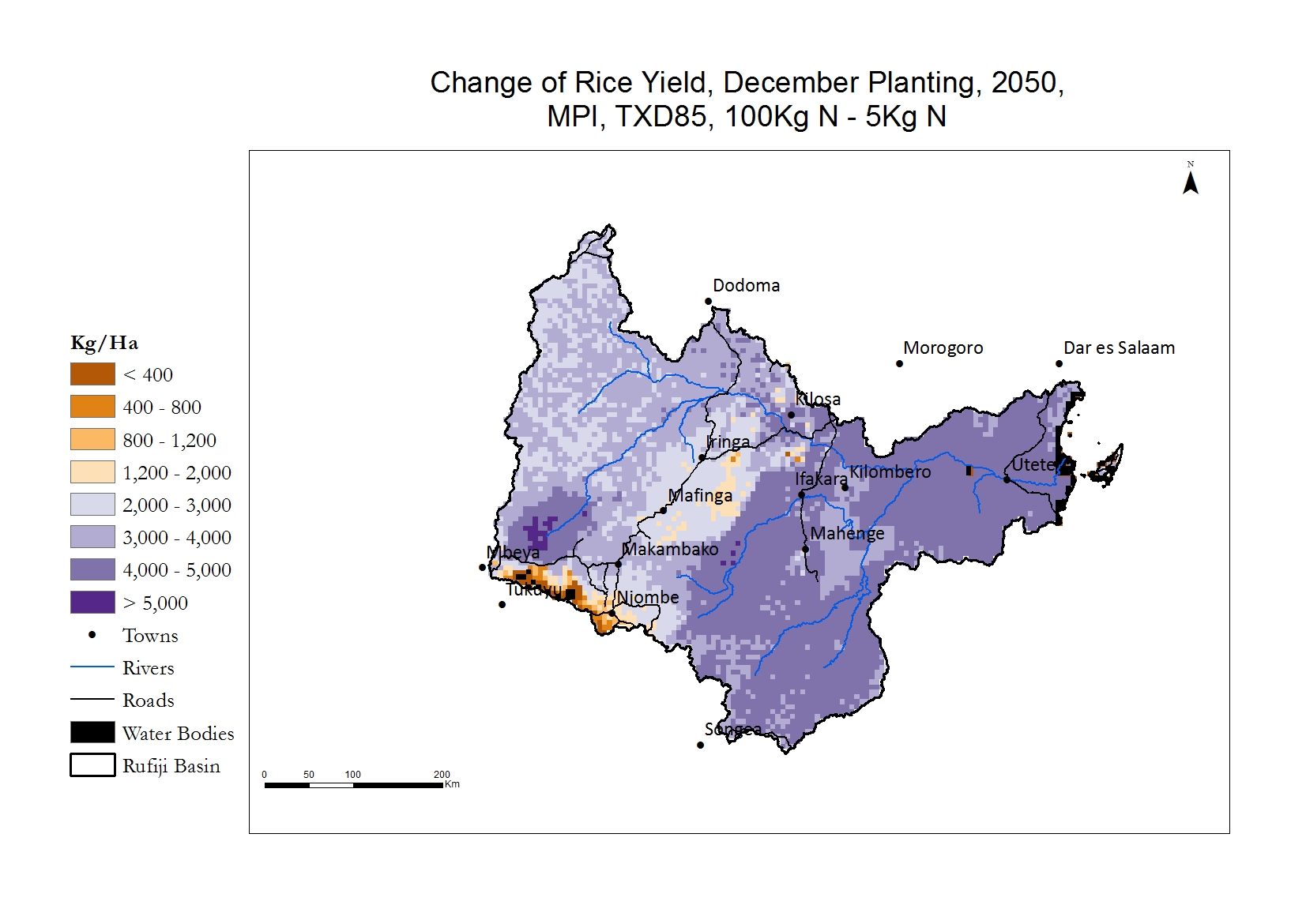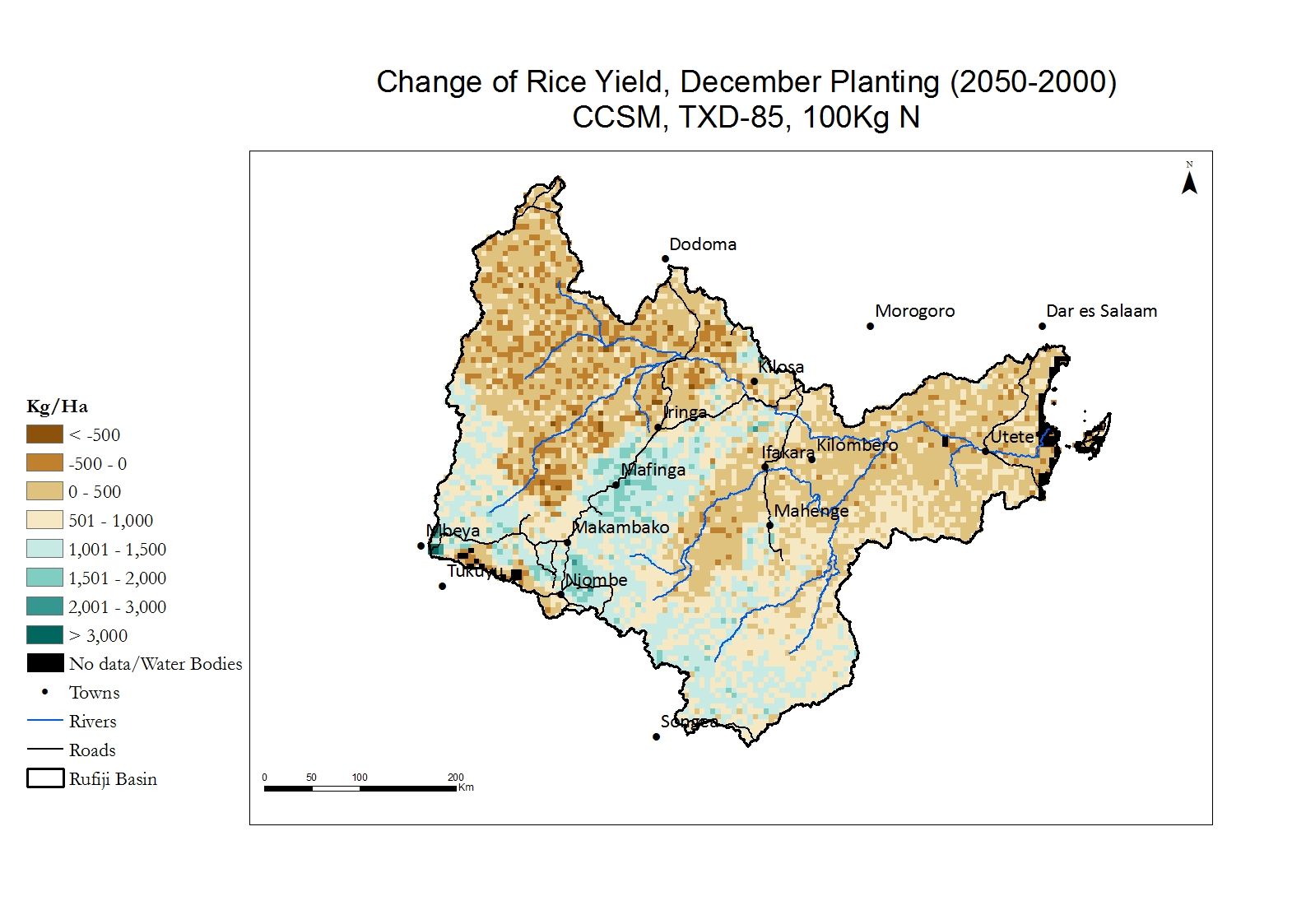Fertilizer Effects
Introduction
Another potentially important adaptation technology is to improve nutrient management. To examine this, the effects of nitrogen fertilizer application on rice yield is simulated under current and future climate conditions. The question being addressed is whether nitrogen fertilizer could reduce the variability of yield, and where in the Basin it would have the largest impact.
Current
Production under two levels of nitrogen (N) fertilizer application (5 and 100 kg/ha) are presented using the improved variety, TXD-85, as an example. Please note the different legends for the two maps, because of the extreme differences in yield. The rice had a high response to N application. Indeed, yield with low N is mostly below 210 kg/ha, but the yield with the higher N application rose above 5,000 kg/ha in the highly productive zones with warm temperatures and sufficient precipitation. The difference map (at the bottom) illustrates the additional amount of rice yield obtained with the higher fertilizer application—over 4,000 kg/ha across wide areas.
Future - 2050
The large difference in yield between low and high fertilizer applications is even larger in the future. The difference maps (at the bottom) illustrate the additional amount of rice yield obtained with the higher fertilizer application (the yield gap). Again, the additional yield is over 4,000 kg/ha across wide areas of the Basin where temperatures are conducive. The two GCMs show similar results.
Change
The impact of climate change on rice production is important for both low and high N application levels. However, the impact of climate change is larger for higher applications of N and in wetter areas because the yield potential is larger there. In cooler or drier areas, such as west of the Highlands, the yield potential is lower and the impact of fertilizer is less.
Where the temperatures are not too warm and water sufficient, therefore, N applications can be expected to continue to provide large returns. Nitrogen fertilizer is thus a good “no regrets” adaptation option.
Comparison
Low Fertilizer (5Kg N)
 Current
Current
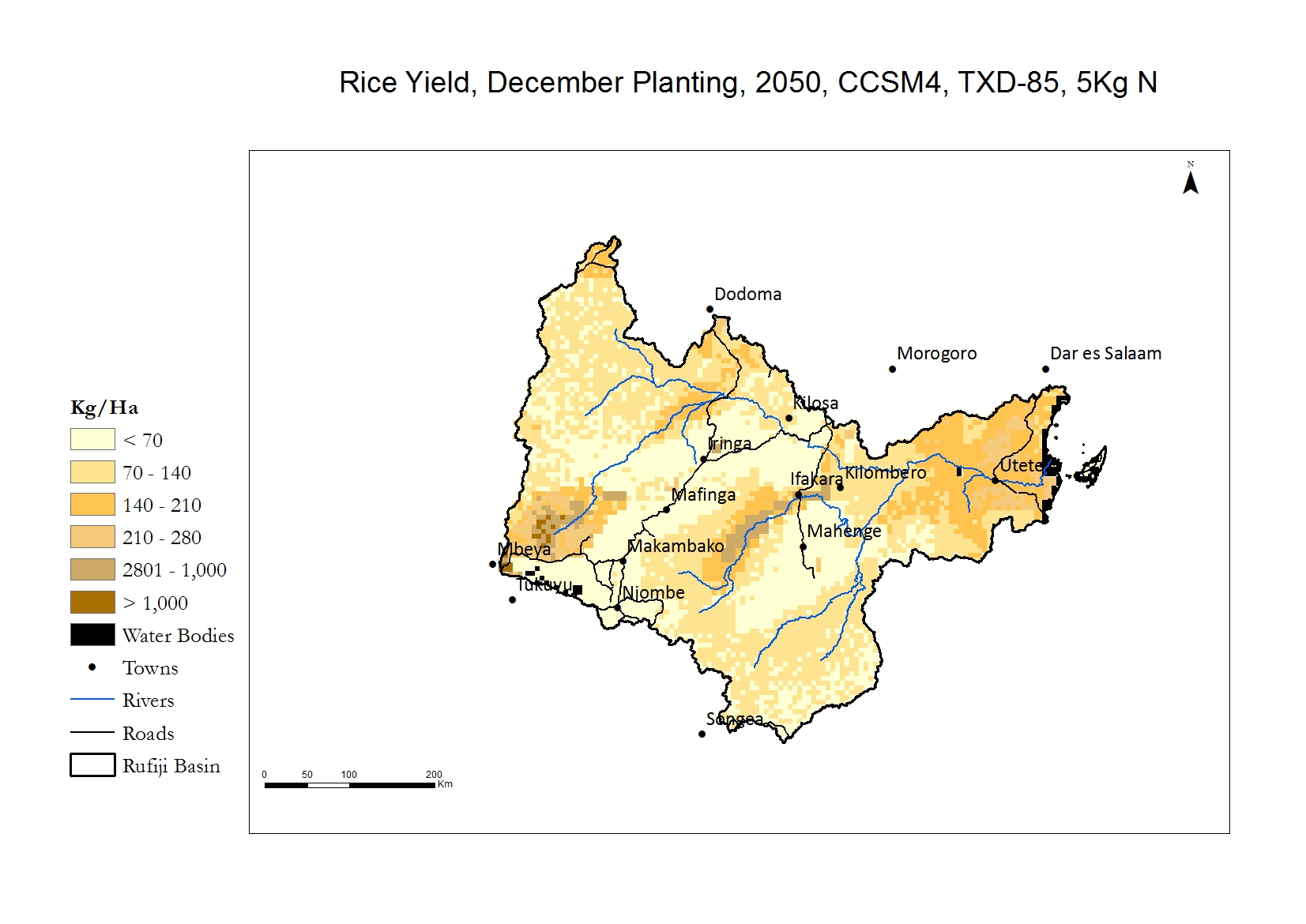
High Fertilizer (100Kg N)
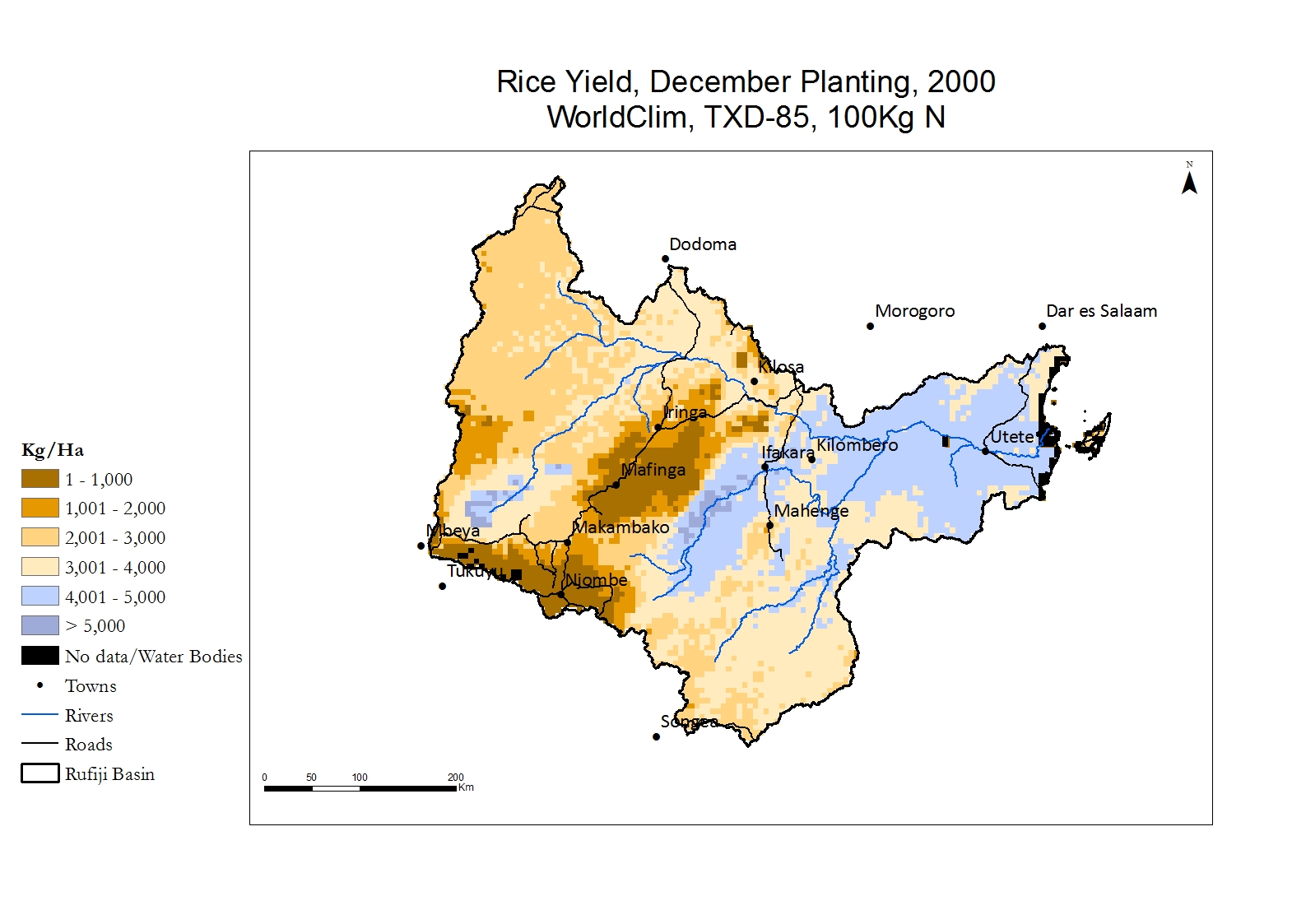 Current
Current
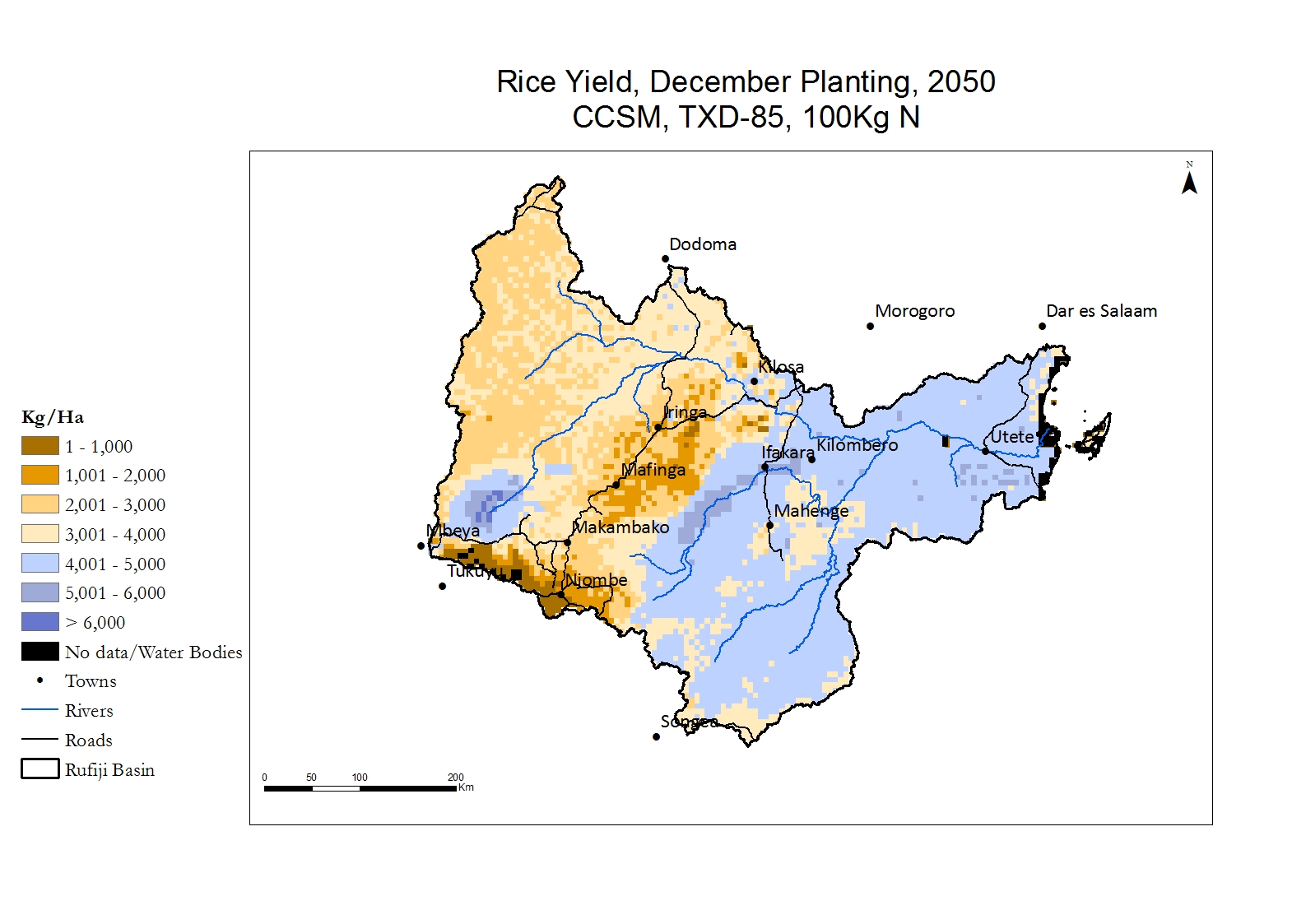
Low Fertilizer (5Kg N)
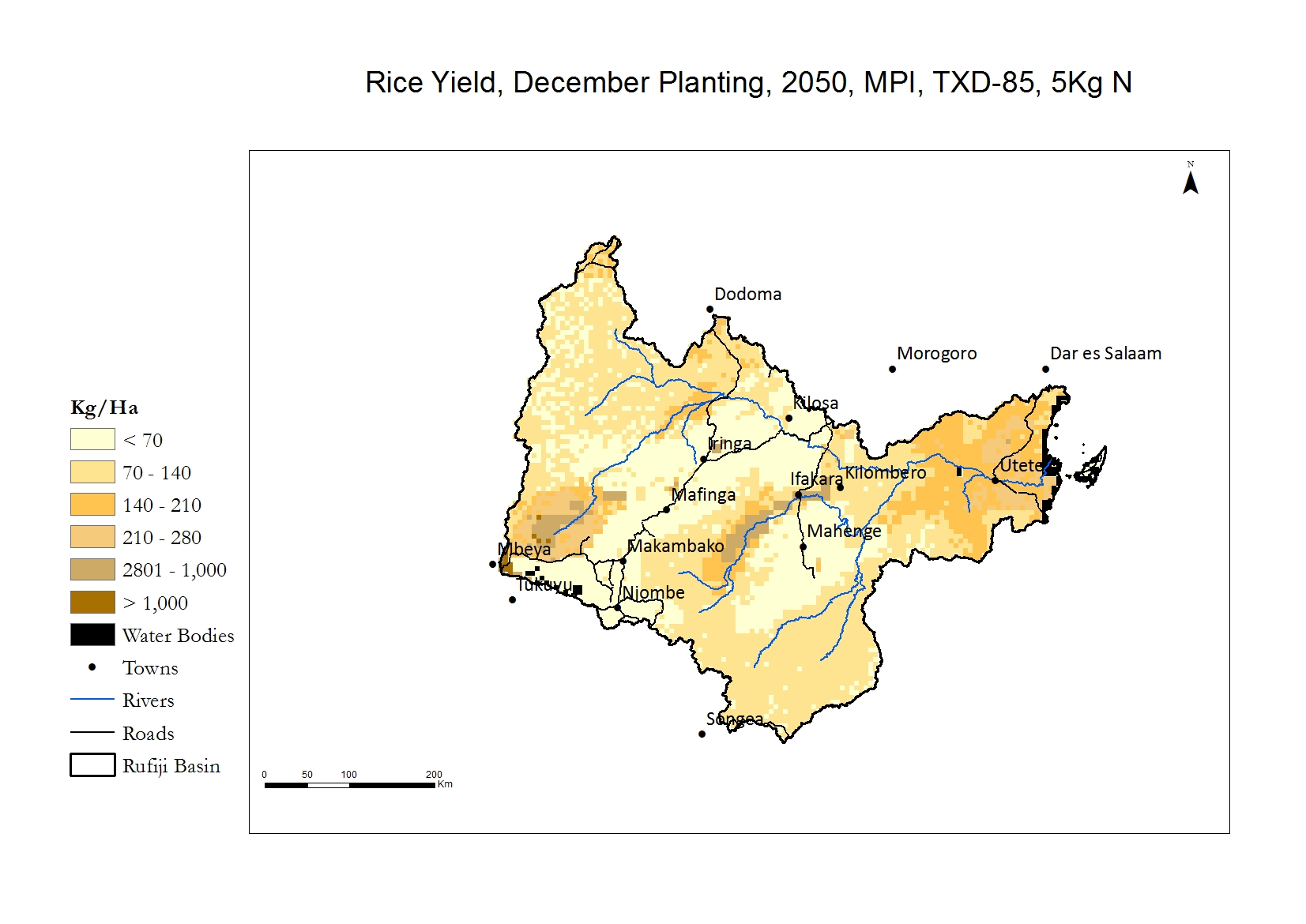
 Current
Current
High Fertilizer (100Kg N)
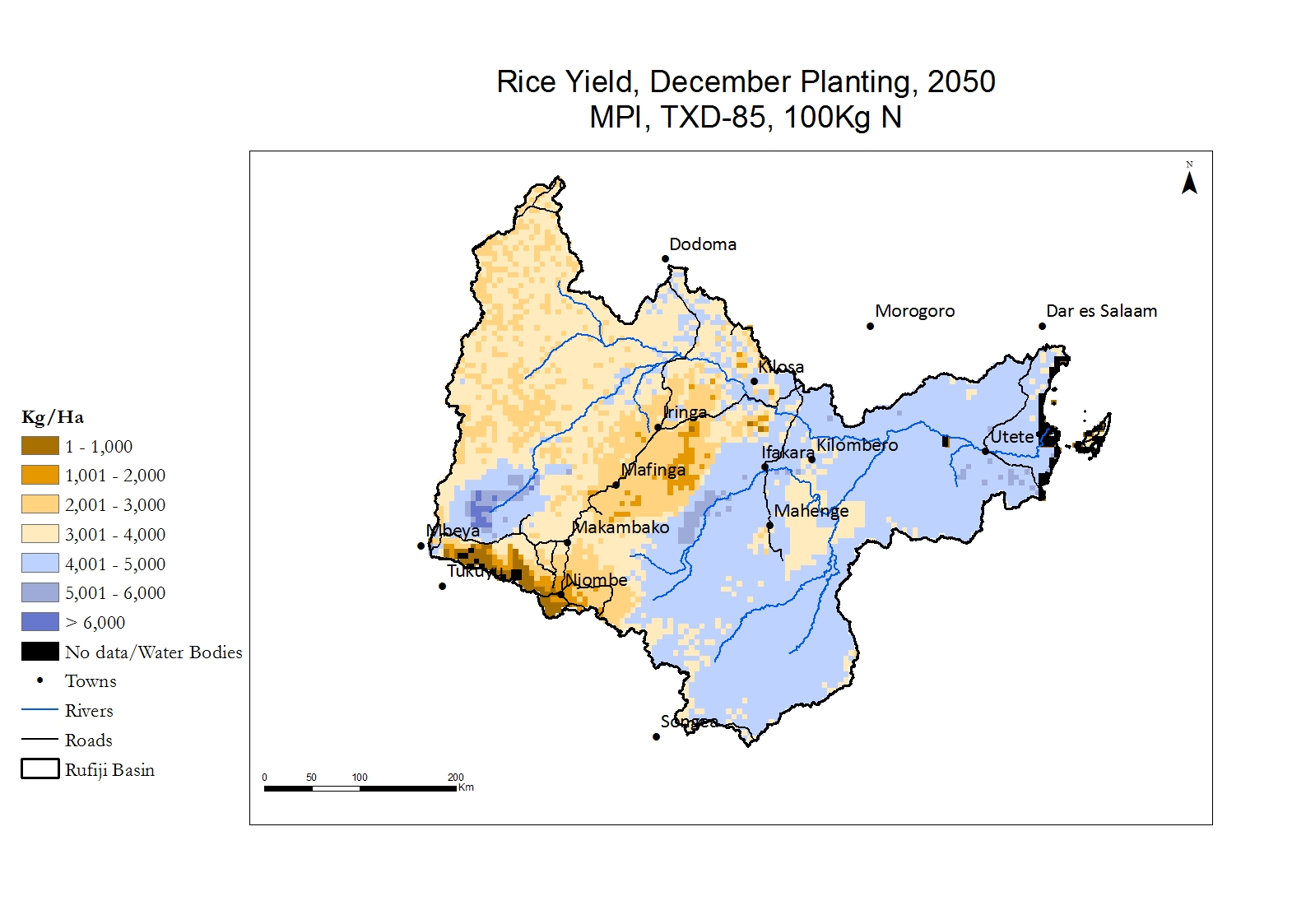
 Current
Current
.jpg)
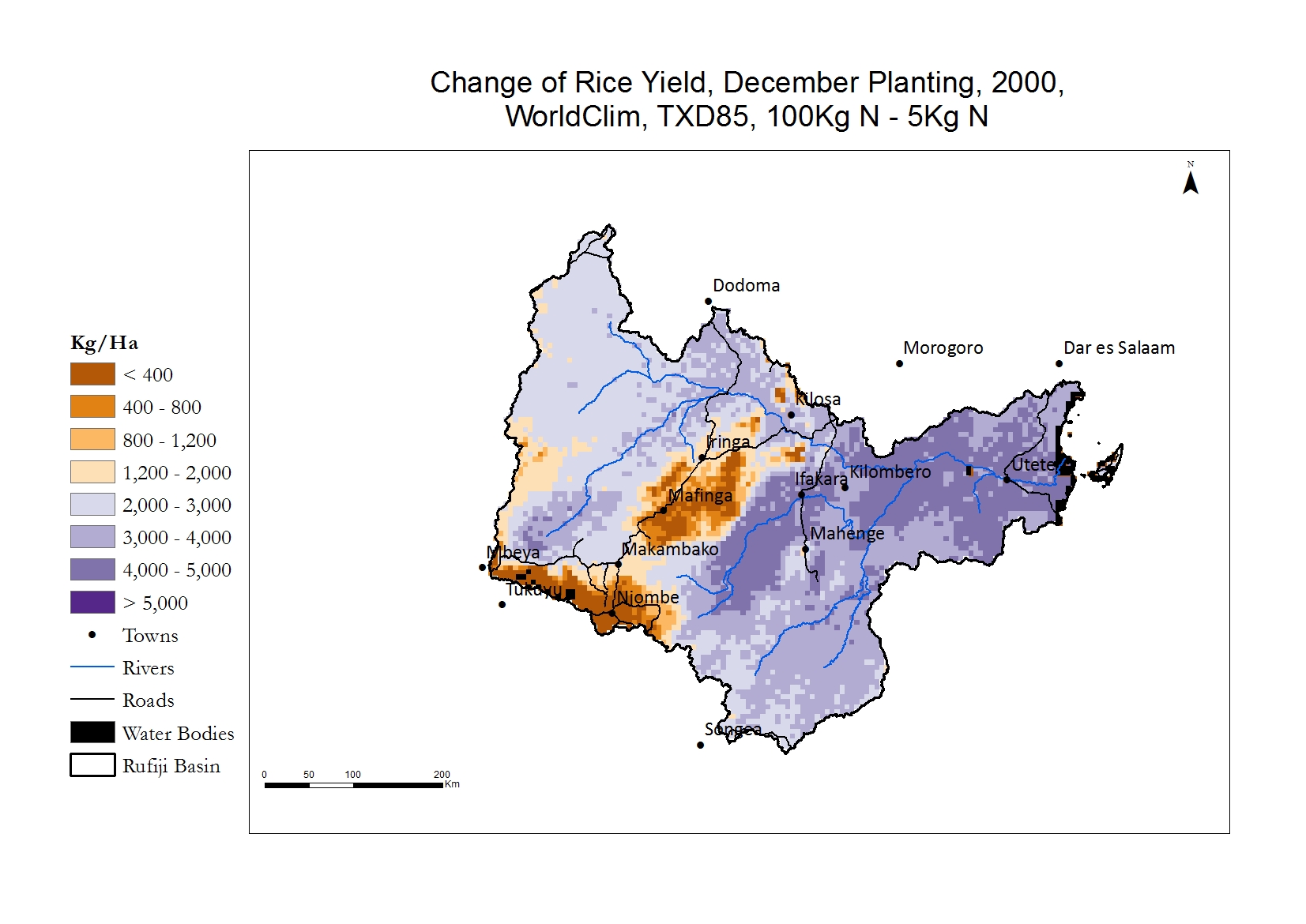
.jpg)
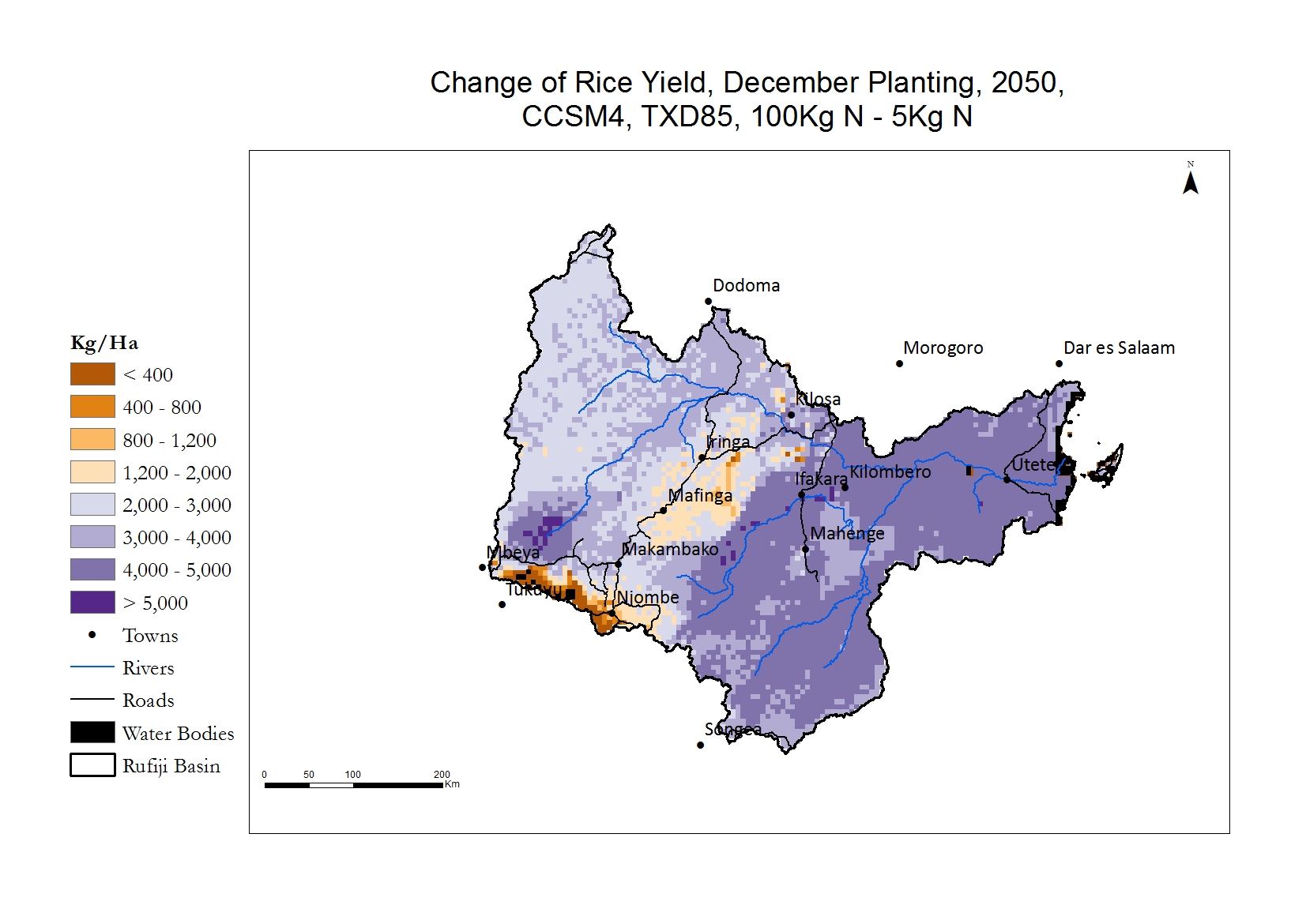
.jpg)
